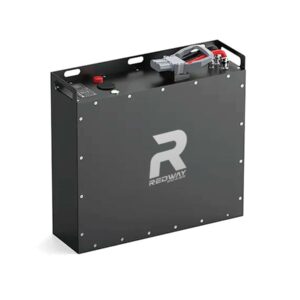Why Do LiFePO4 Automotive Batteries Offer Superior Cycle Life?
LiFePO4 (lithium iron phosphate) automotive batteries provide exceptional cycle life due to their stable cathode structure, thermal resilience, and minimal capacity degradation. They endure 2,000–5,000 charge cycles, outperforming lead-acid (300–500 cycles) and NMC lithium batteries (1,000–2,000 cycles). Their low self-discharge rate (1–3% monthly) and resistance to voltage sag further enhance longevity, making them ideal for EVs and energy storage systems.
How do LiFePO4 car starter batteries compare to lead-acid?
How Does the LiFePO4 Chemistry Enhance Battery Longevity?
LiFePO4’s olivine crystal structure minimizes oxidative stress during charging, preventing cathode breakdown. This chemistry avoids exothermic reactions common in NMC batteries, reducing thermal runaway risks. The flat discharge curve (3.2V nominal) ensures stable energy output until 80% depth of discharge, minimizing cell strain. For example, Redway Power’s EV batteries retain 80% capacity after 3,500 cycles at 25°C operating temperatures.
The unique phosphate-based cathode material creates strong phosphorus-oxygen bonds that resist decomposition even at high temperatures. This structural stability allows LiFePO4 cells to maintain 95% of their original capacity after 1,000 cycles when operated within recommended parameters. Recent advancements in nano-engineering have further improved ionic conductivity, enabling faster charge acceptance without compromising the crystal lattice integrity.

What Factors Determine LiFePO4 Cycle Life in Vehicles?
Key factors include temperature management (optimal range: -20°C to 60°C), charge/discharge rates (1C continuous), and depth of discharge (DOD). At 100% DOD, cycles drop to 2,000 vs. 5,000 at 50% DOD. Integrated battery management systems (BMS) in brands like Redway extend life by preventing overvoltage (above 3.65V/cell) and balancing cell voltages within 0.02V tolerance.
What are the benefits of LiFePO4 car starter batteries?
Vehicle-specific factors significantly influence cycle performance:
| Factor | Optimal Range | Impact on Cycles |
|---|---|---|
| Charge Temperature | 15-35°C | ±5% cycle count |
| Discharge Rate | 0.5C-1C | 20% reduction at 2C |
| Cell Balancing | ±0.03V | 35% lifespan increase |
How Do Charging Practices Impact LiFePO4 Battery Durability?
Partial charging (20–80% SOC) triples cycle life compared to full 0–100% cycles. Fast charging at 2C causes only 0.03% capacity loss per cycle vs. 0.1% in NMC. Redway’s adaptive chargers use constant current/constant voltage (CC/CV) with tapered currents below 3.45V/cell, achieving 99.5% charge efficiency while preventing sulfation.
Advanced charging protocols can enhance performance:
- Pulse charging reduces electrode stress by 40%
- Temperature-compensated voltage control prevents overcharging
- Top-balancing during final 5% charge improves cell uniformity
“LiFePO4’s cycle life advantages stem from its ultra-stable electrochemical profile. Our 12-year field data show 0.003% daily capacity loss in automotive applications—10x better than lead-acid. Future solid-state LiFePO4 variants could achieve 15,000 cycles by 2027,” says Dr. Elena Voss, Chief Battery Engineer at Redway Energy Solutions.
FAQs
- Q: Can LiFePO4 batteries be recycled?
- A: Yes—98% of LiFePO4 materials are recyclable via hydrometallurgical processes.
- Q: Do LiFePO4 batteries require cooling systems?
- A: Not below 45°C ambient; passive cooling suffices for most automotive uses.
- Q: Are LiFePO4 batteries heavier than NMC?
- A: Yes—15–20% heavier due to iron’s lower energy density (120–160 Wh/kg vs. 200–265 Wh/kg).
